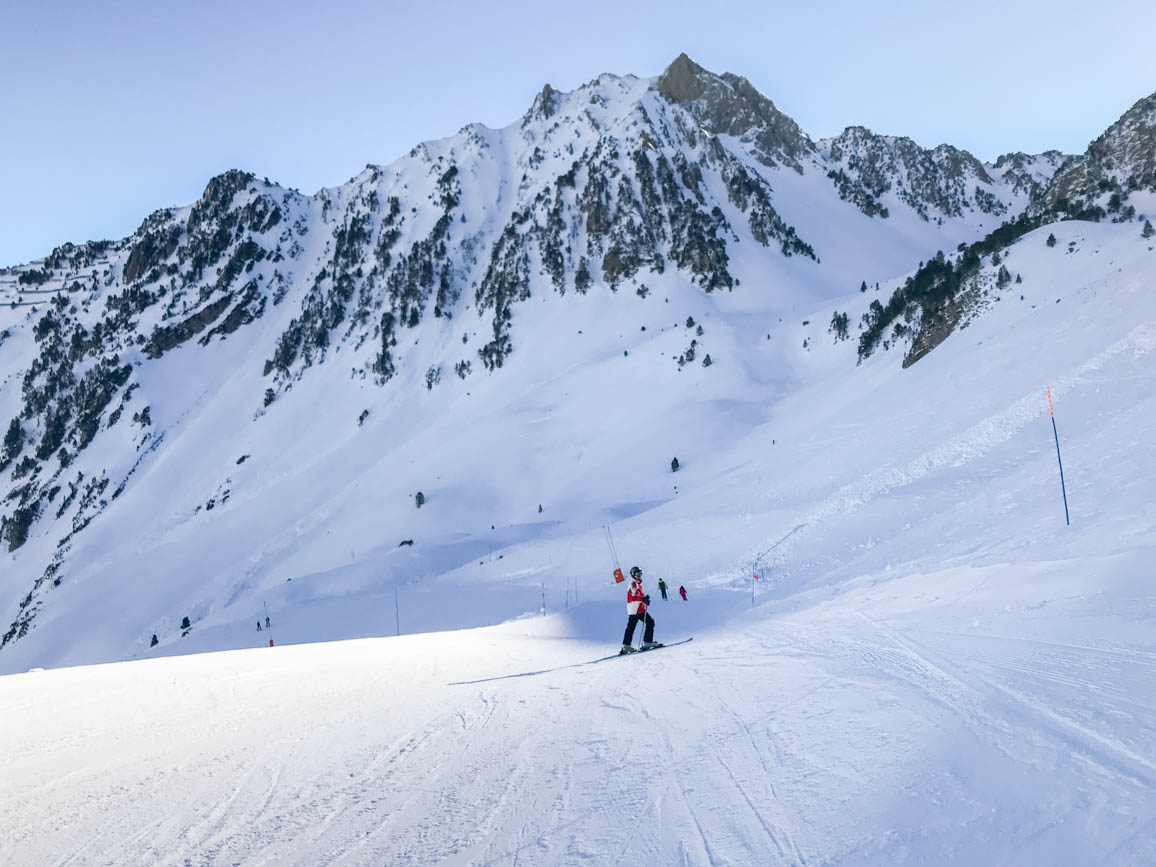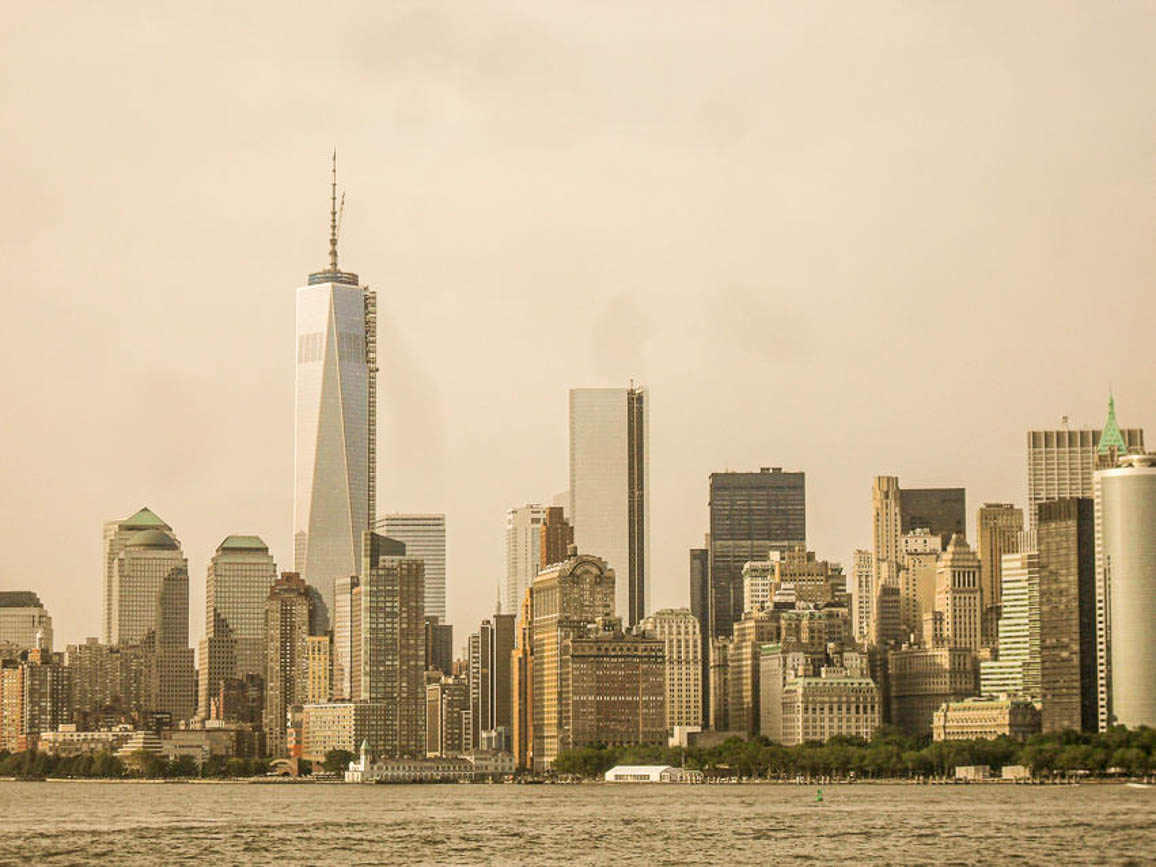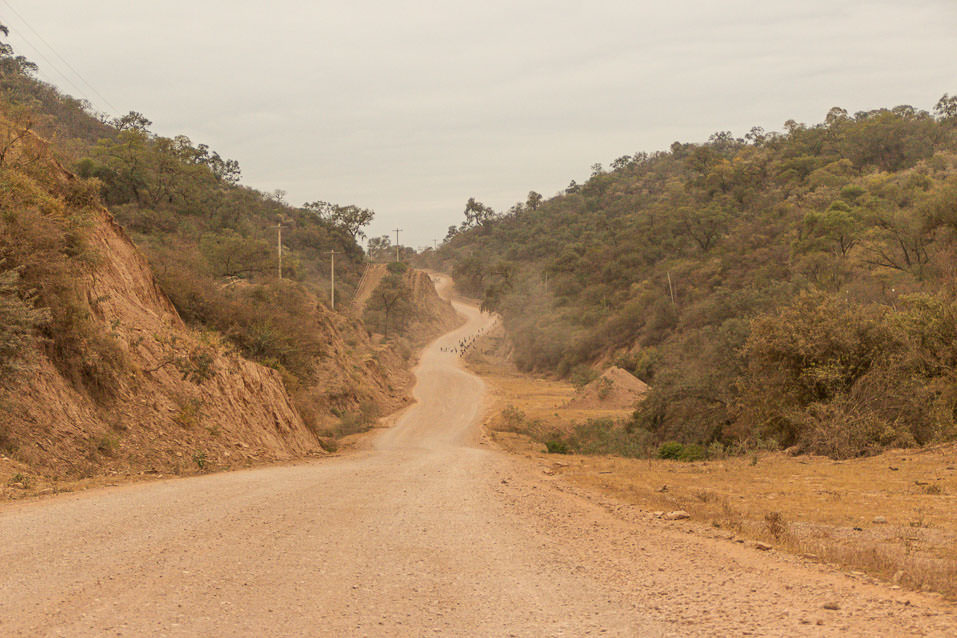
Traveling from Bolivia to Spain during the COVID-19 pandemic
After being in lockdown for four months in Bolivia, we managed to travel back home to Spain in the middle of the COVID-19 global pandemic. I’m happy to report we’re now safe and sound with our families! If you would like to know what it was like to get from our home in Tarija to Santa Cruz and then all the way to Spain, keep on reading.
How the whole trip idea came about
Since our voluntary lockdown at home on March 15th, we had barely left our apartment except for grocery shopping. Although my boyfriend works for the German Cooperation in Bolivia and we had had the opportunity to be repatriated in March, we turned out that offer given the risk. The situation at that point in Europe, especially in Spain, was very serious compared to the one in Bolivia. That’s why we decided to stay in the country instead of traveling internationally and eventually catching the COVID-19 virus.
However, with the winter season in Bolivia, cases started to sharply increase in June. We also started to hear some worrying news that some people were dying on the streets on their way to the hospital. Moreover, we began to wonder when this whole situation would finish knowing that in Bolivia it was only starting to get worse. All in all, we had abandoned the idea of seeing our families in Spain anytime sooner than Christmas.
July came and with it, we booked flights for July 20th. However, a few days later, we found out they had been canceled and we were rebooked in another flight for August 3rd (knowing that it would probably be canceled again). By this time, the European Union had put nationals from certain countries in a ‘black list’ and the situation with flights coming from Bolivia was unclear.
Luckily, my boyfriend got a call from a colleague warning him that there was a humanitarian flight leaving from Santa Cruz de la Sierra on July 17th. We decided that, given the circumstances, it was our best chance to be evacuated and travel back to Spain to be reunited with our families. We managed to book seats on that flight through the German Cooperation and started planning our trip back home.
Planning a trip during the COVID-19 pandemic
Dealing with uncertainty
This was probably the worst element in planning our trip. Uncertainty can cause a lot of stress. Obviously, given the current circumstances with the COVID-19 pandemic, you can’t predict what will happen tomorrow or the day after tomorrow. Until the very last day before leaving, we had no clue whether we would get all the necessary permits, tests, etc or not. We didn’t know whether we would be able to fly to Santa Cruz or if we had to continue with our ‘wild road trip’ idea. There are some things you can’t control and this was a big lesson learned: take a deep breath, relax and keep going! The worst that could have happened was that we didn’t leave on the planned date and had to rebook flights for days/weeks later.
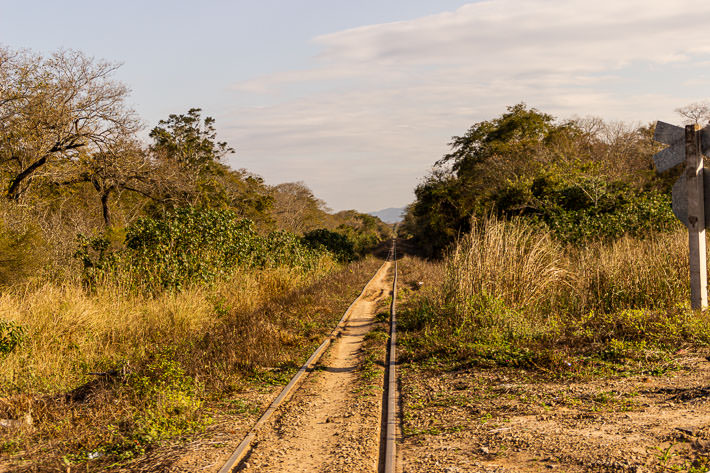
Prepping our car
First things first, we had to find a way to get from Tarija to Santa Cruz de la Sierra. Domestic flights were not operating although there used to be two companies flying that route (BOA and Amaszonas). Since flying wasn’t really an option (we kept it as the option B until the very last moment) and buses weren’t driving passengers either, the only realistic alternative was driving ourselves. There was a problem, though! My boyfriend had to seek permission since our car was owned by the German Cooperation. Thankfully, they agreed given the emergency situation we were in.
Moreover, we needed to get special driving permits, which would in turn allow us to pump gas on our way to Santa Cruz. Believe it or not, we got the permits the day before leaving Tarija. It was really stressing not knowing whether we would be able to reach our destination in order to catch the humanitarian flight on time!
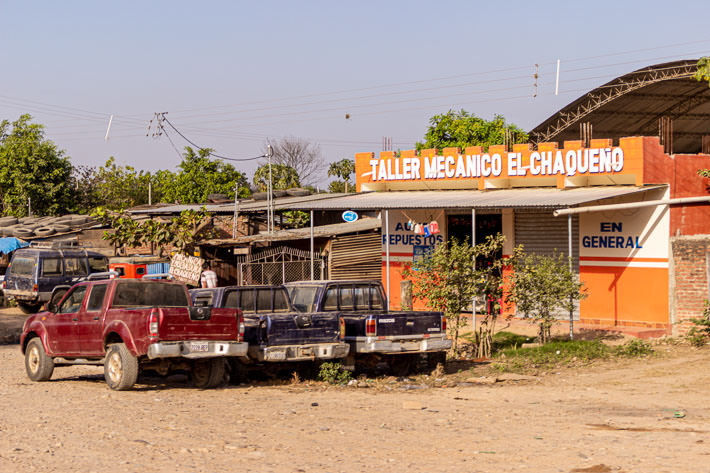
Gas & food
This was no ordinary road trip and with it, came a lot of unexpected items that we needed. For example, we had to get 100 liters of gas in two large cans through a neighbor. You may ask yourself ‘What about the gas stations along the way?’. Well, as a sneak peek of the story, let me tell you that I’m happy we brought our own gas and learned how to pump it manually…
On the other hand, we needed to plan accordingly for such a long road trip in terms of food, especially in case anything failed and we found ourselves stuck in the middle of nowhere. We bought plenty of water (the vast region of Santa Cruz is known for being very humid and warm) in addition to bread, cold meat, cookies and so on. Of course, we also stocked on gloves and masks given the coronavirus situation.
COVID-19 test
As you can imagine, we decided to get PCR tests a couple of days before leaving for our own peace of mind. They didn’t ask us for the results in any of the transit destinations during our trip back to Europe, but it was good to have a recent proof that we were both perfectly healthy!
In our case, getting the PCR test in Tarija was tricky. I called the regional Health Department (SEDES) numerous times but no one would pick up the phone. As it often happens in developing countries, we found a contact working at SEDES through a friend of a friend. Once we contacted him, he let us know that we needed to pay in advance to be tested. After that was out of the way, we did our test on Monday (through the nose, it was a bit painful let me tell you!) and we got the negative results on Tuesday, on our departure’s eve.
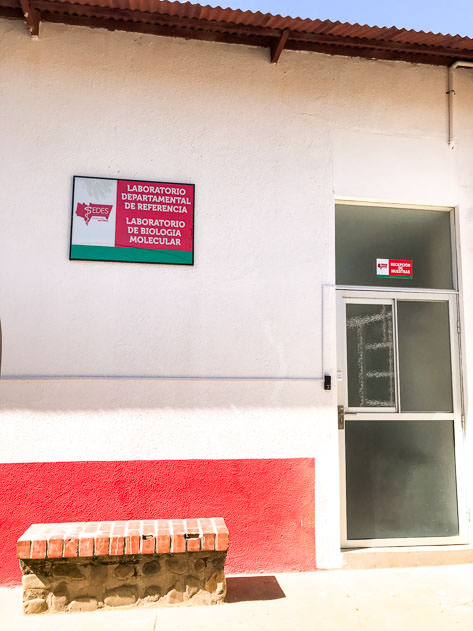
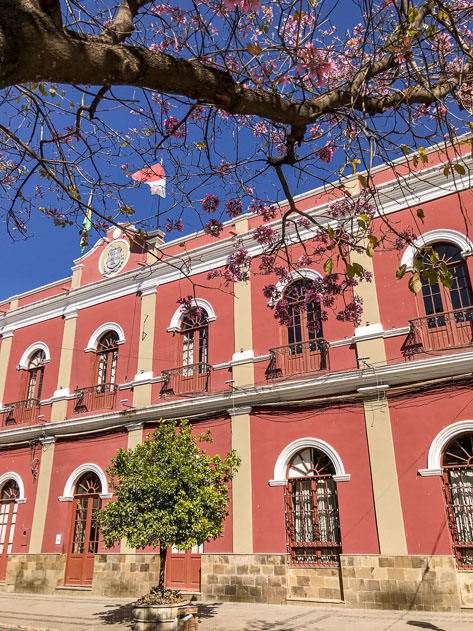
The journey
An epic road trip from Tarija to Santa Cruz de la Sierra
To give you an idea of the distance, there are 666 kms from Tarija to Santa Cruz. However. given the conditions Bolivian roads are in, the trip by bus (which is very popular amongst nationals here) usually takes up to 15 hours. If you’re driving a car, expect the trip to last around ten and a half hours. I know it sounds like a lot and that is why we prepared accordingly.
There are 666 kms from Tarija to Santa Cruz. If you’re driving a car, expect the trip to last around ten and a half hours!
Wednesday (otherwise known as D-Day) started early, very early. We woke up at 4 am, finished packing some last minute things. By 5.30 am, we were hitting the road. The first leg of the epic road trip from Tarija to Santa Cruz de la Sierra was the most difficult. The weather was dark, moody and rainy and the road was dangerous, full of curves and foggy. As our helpful neighbor had warned us, 50 kilometers before Villa Montes we reached a road without pavement. As a result, the journey turned bumpy, slower and dusty. Thankfully, we had purchased a plastic to wrap the luggage and gas cans sitting in the back of our pick-up.
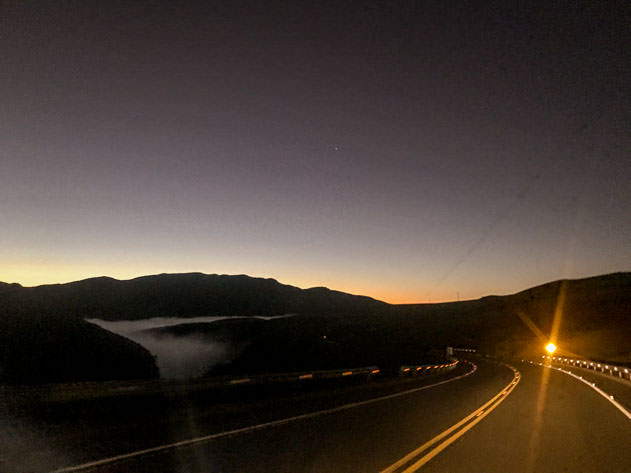
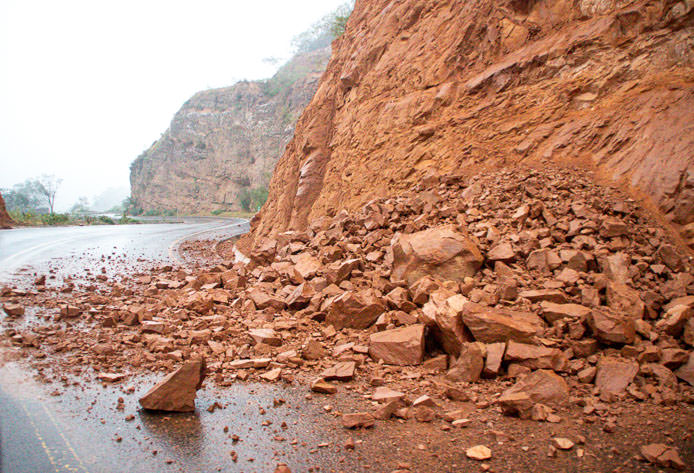
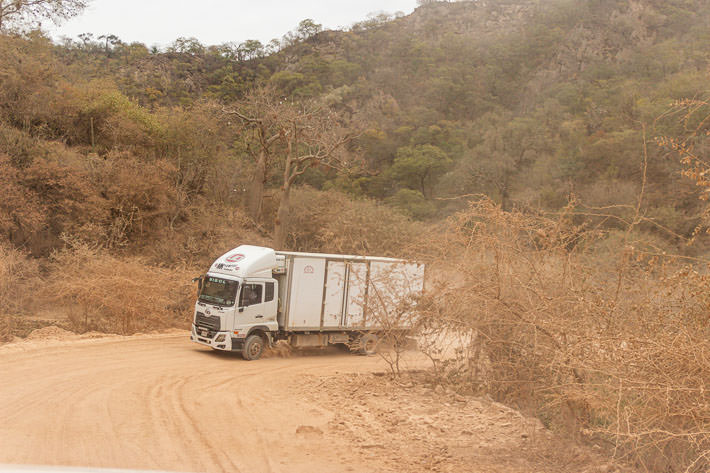
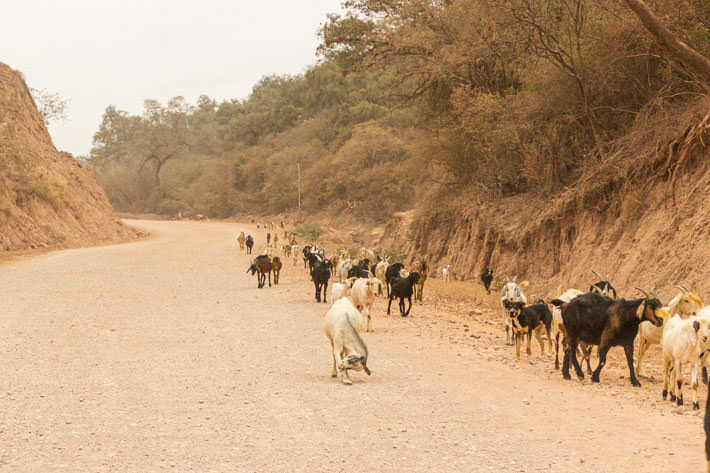
One of the highlights of the entire trip was precisely on our way to Villa Montes. While you’re driving on Ruta Nacional 11, you’ll notice a wide river to your left: that’s the Pilcomayo river, which is famous for its fish. Actually, most of the fish you’ll find in Tarija, comes from here. Even though the view of the river might be beautiful, be extra careful on the road because it’s narrow and carved on rock. Besides, there are no crash barriers to prevent you from falling to the river!

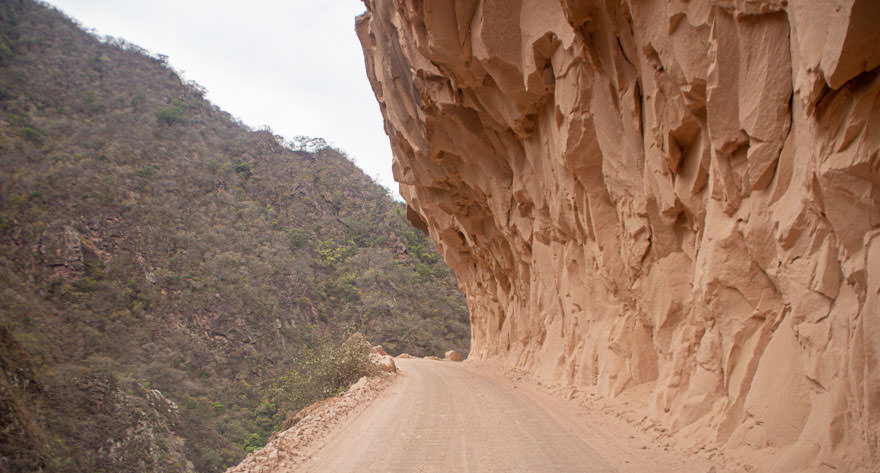
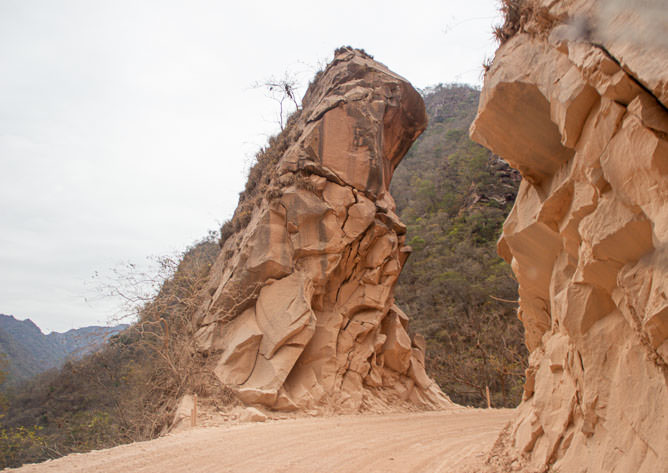
After passing through a checkpoint where they took our temperature, we finally reached Villa Montes. We waited for half an hour until our neighbor’s contact Mayer showed up at the Mercado Campesino roundabout. The idea was that he would lead us to a detour in order to avoid a major blockade on the main road to Santa Cruz. The shortcut turned out to be a bumpy and dusty road with no pavement at all, and it was actually dangerous because we could barely see him driving in front of us.
At a certain point, he stopped and said we just had to drive straight to reach the road. But the problem was that we hit the blockade itself and it was huge! There were at least 50 large trucks. Apparently, they were protesting and demanding health items for the city of Villa Montes. Hence, my boyfriend got off the car and asked some truck drivers along the way to move their vehicles. Luckily, they all agreed (except for the last one so we had to carefully drive on the shoulder of the road). Shortly after this difficult episode, we reached a decent concrete road and crossed the Tarija and Chuquisaca departments. A few hours and vast extensions of cattle and vegetation later, we finally arrived to Santa Cruz de la Sierra.
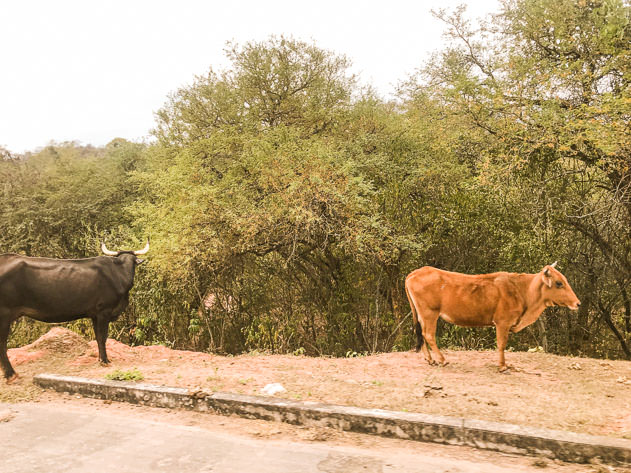

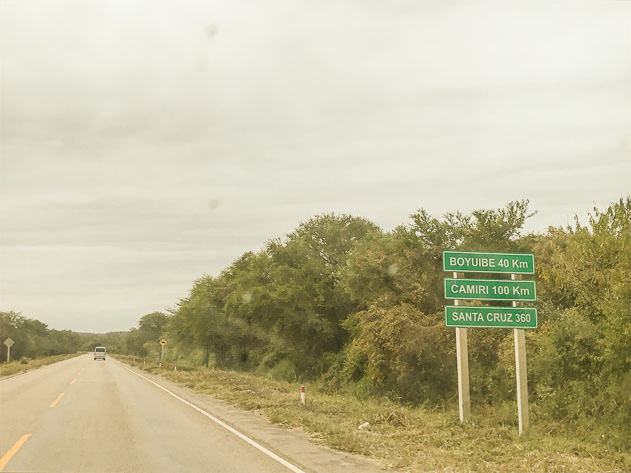

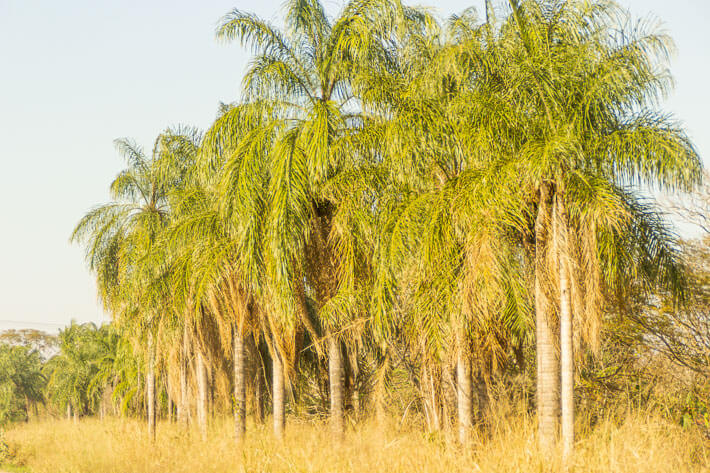

All in all, the trip took us 12 and a half hours (10 and a half actually driving) but it wasn’t as tedious as we had expected. Since we were two, we took turns. On another note, we found some gas stations along the way but they looked either deserted or closed so we had to pump gas ourselves with a plastic hose!
Pit stop in Santa Cruz de la Sierra for a day
As soon as we arrived to Santa Cruz on Wednesday evening, we realized the city was as people had often described it to us: the Miami of Bolivia. Full of skyscrapers and modern buildings, Santa Cruz de la Sierra is considered the financial and economic hub of the country and where people make big money. Given its warm climate, the entertainment industry is headquartered here too.
On our way to my boyfriend’s colleague’s house where we would stay for two nights, we saw quite a few rich residential areas. We ordered a well-deserved pizza, walked around a bit and went to bed. The next day we had a lovely barbecue with the young couple that was guarding the house.
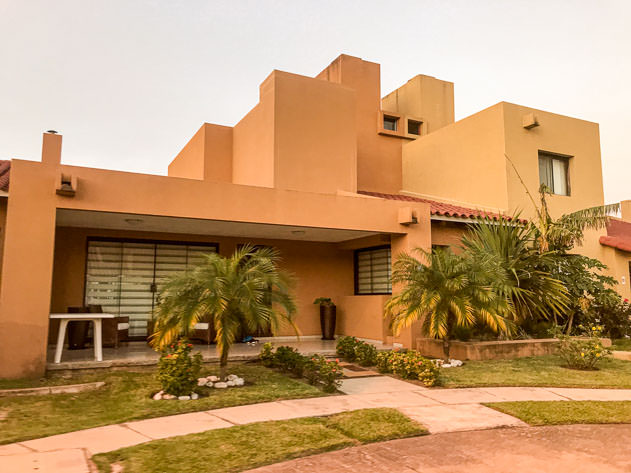
Flying to São Paulo, Zurich and Bilbao
Another day, another early wake up call. On Friday, we headed to the Viru Viru airport by taxi. While we waited for our 8.30am humanitarian flight to depart for São Paulo, we met with other colleagues from the German Cooperation returning to Europe. During that time, we heard all kinds of stories from families and individuals who had been in lockdown for four months in Bolivia, just like us.
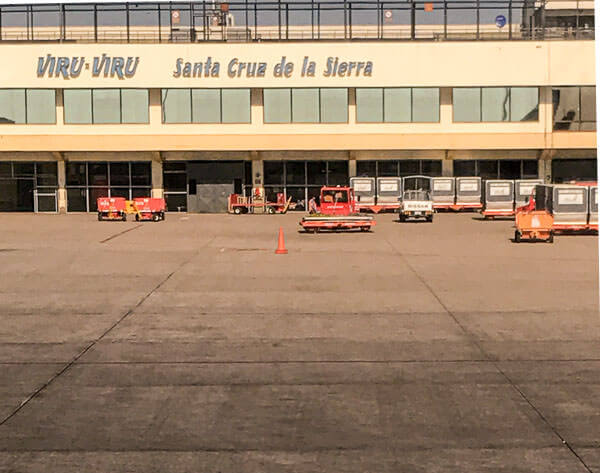
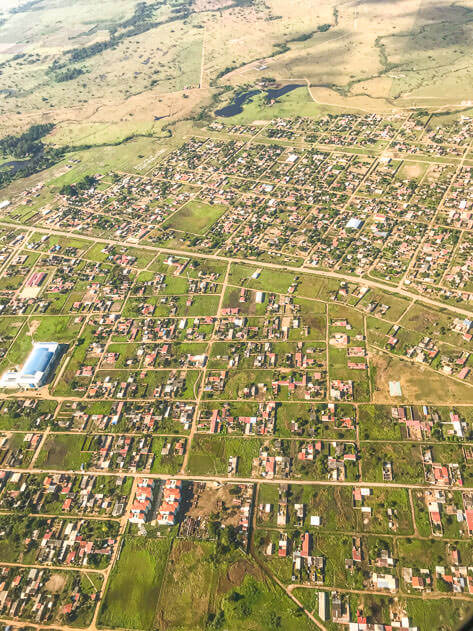
Finally, we left Bolivia and our first stop on this international journey to get back home was São Paulo in Brazil. What we found there was a deserted airport. No one checked on our temperature upon arrival (maybe because we were on transit?), most shops and restaurants were either empty or closed (including the water fountains!). The only place where we could have something to eat and spend the layover was at the Heineken cafeteria. As a way to indulge myself after 123 days of confinement, I went for mozzarella sticks, a BLT burger and a passion fruit caipirinha with cachaça premium.
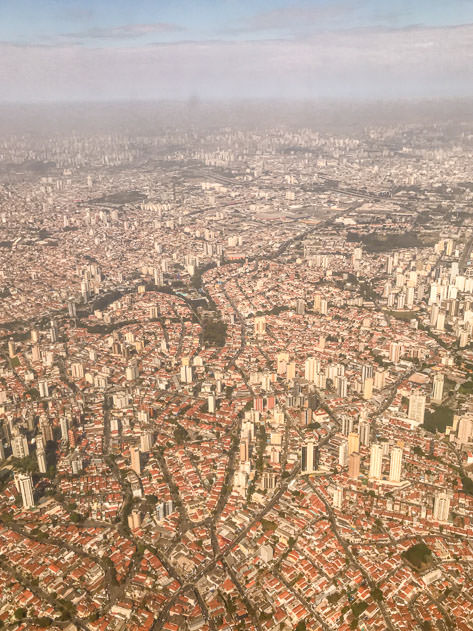
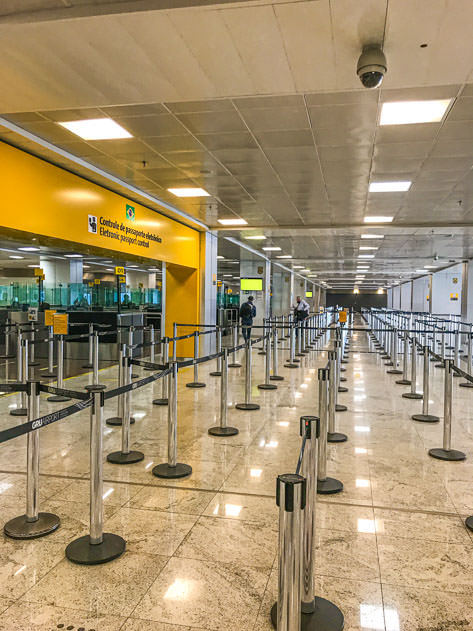
Our SWISS flight to Zurich in Switzerland departed at 6.30pm later that day and we landed at 10.30am on the next morning. Our transoceanic journey was comfortable despite wearing the mask at all times. Surprisingly, the plane was almost at full capacity. As soon as we landed in Zurich, I had to say goodbye to my boyfriend (he was connecting to Madrid later that day) and run to catch my flight to Bilbao in Spain. Luckily, it was a smooth connection and all went well!
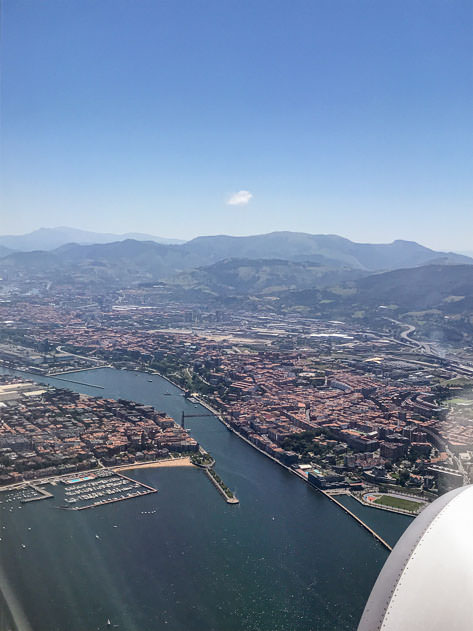
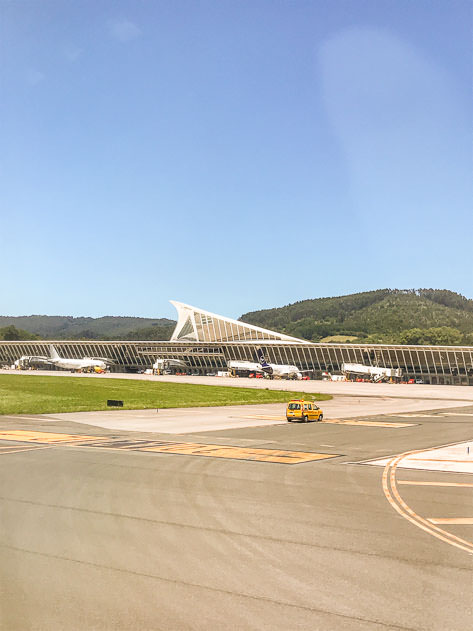
COVID19 considerations to know before entering Spain
At the time of writing this post, there are several considerations to take into account if you’re traveling to Spain.
- Fill an online form through the Spain Travel Health app
- Checkpoints upon arrival at the airport
- Check the updates on the Spanish Health Ministry website
- Follow up with your airline to make sure your flight isn’t canceled
- Take a (voluntary) PCR test
Fill an online form through the Spain Travel Health app
This step is mandatory 48 hours before traveling to Spain. You just need to create a new form via the Spain Travel Health app and fill out several screens regarding your personal details, health conditions, date of entry and address in the country, among others. Once this is completed, you will receive a QR code in your email. Keep it handy as this will be scanned upon arrival to any airport in Spain. In case you can’t do this process online, the company you’re flying with can certainly provide you with a form to be filled on board.
Checkpoints upon arrival at the airport
When I landed in Bilbao, there were several checkpoints in place for arriving passengers. First of all, they scanned the QR code I received after filling the online form on the Spain Travel Health app (see above). Secondly, they checked my temperature and general condition. After this, you’re good to go!
Check the updates on the Spanish Health Ministry website
In these uncertain times we live in, checking the news regularly is highly recommended, especially if you’re traveling to a foreign destination and are unsure about the requirements upon arrival. Due to the coronavirus situation, I advise you to browse the Spanish Health Ministry website to check on the current number of cases by region and the conditions you may be asked to comply with (mandatory use of the mask, quarantine, etc).
Follow up with your airline to make sure your flight isn’t canceled
I can’t recommend this enough. Depending on where you are in the world, chances are that nationals from your country aren’t allowed into another country or that the flight you booked weeks ago has been canceled for a similar reason. As a matter of fact, this is what happened to us when our first flights from Bolivia to Spain were canceled and I only found out when I called them. They didn’t even send us an email! Given all the above, follow up with your airline to ensure your trip will go as planned.
Take a (voluntary) PCR test
For my own peace of mind and that of my loved ones, once I arrived from Bilbao to Irún (my hometown), I stayed isolated in an empty family apartment. After a few days, I went to a private clinic in San Sebastián (Policlínica Gipuzkoa) to run another PCR test. In the afternoon, I got the negative result and I was ready to surprise my family!
What comes next?
As I mentioned before, making plans for the future is really challenging at this time. In any case, we have our return flights to Bolivia on October 10th but I think I’ll delay my trip until early next year. For the time being, my plan is to just enjoy summer back home with family and friends while I work remotely from Spain.
Have you recently traveled during the COVID pandemic? How was it? Are you planning to travel to Spain soon? Let me know in the comments below!


